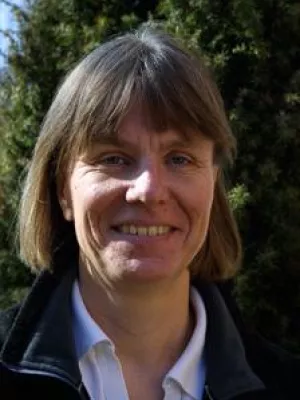
Katarina Hedlund
Professor

Disentangling plant and soil microbial controls on carbon and nitrogen loss in grassland mesocosms
Author
Summary, in English
It is well known that plant-soil interactions play an important role in determining the impact of global change phenomena on biodiversity and ecosystem functioning. Little is known, however, about the individual and relative importance for carbon (C) and nitrogen (N) cycling of non-random changes in plant and soil communities that result from global change phenomena, such as fertilization and agricultural intensification. We set up a field-based mesocosm experiment in which we re-inoculated soil with contrasting microbial communities taken from extensively managed and from intensively managed grasslands. In a full-factorial design, we subsequently established plant communities representative of intensively and extensively managed grasslands and imposed a fertilization treatment. We then measured plant biomass and diversity, and leaching of C and N as key measures of C and N loss. We hypothesized that non-random changes in both microbial and plant communities would impact C and N leaching, but via different mechanisms. We predicted that plant communities representative of extensively managed grassland would reduce C and N leaching directly through increased water or N uptake, or indirectly via promoting microbial communities that immobilize C and N, whereas plant communities of intensively managed grassland would have the opposite effect. We also hypothesized that microbial communities of extensively managed grassland would feed back positively to plant diversity and that matching' plant and microbial communities would reduce C and N leaching. We found that both plant and microbial communities from extensively managed grassland reduced C and N leaching, especially when matched'. Plant community effects on C and N leaching operated directly through root C inputs and N uptake, rather than through changes in soil microbial communities. In contrast, microbial communities modified C and N leaching both directly by immobilization and indirectly through modifying plant community composition. Synthesis. Our results show that changes in plant and microbial communities both individually and interactively modify C and N loss from grasslands. Moreover, our results suggest that soil microbial communities typical of extensively managed grassland might counteract, or delay, the negative consequences of fertilization on plant diversity and ecosystem functioning.
Department/s
- Biodiversity
- BECC: Biodiversity and Ecosystem services in a Changing Climate
- Soil Ecology
Publishing year
2015
Language
English
Pages
629-640
Publication/Series
Journal of Ecology
Volume
103
Issue
3
Document type
Journal article
Publisher
Wiley-Blackwell
Topic
- Ecology
Keywords
- bacteria
- carbon
- feedback
- fungi
- microbial community
- nitrogen
- plant
- community composition
- plant-soil (below-ground) interactions
Status
Published
Research group
- Soil Ecology
ISBN/ISSN/Other
- ISSN: 1365-2745